History and practical application of basic and advanced synthesis concepts
Modular synthesizers changed music making, starting in the 1960th. Many models have been developed over the past decades. The 6-day workshop will cover some of its history but mainly use the digital clone VCV Rack to teach the building blocks of synthesis. Each student will learn patching principles with oscillators, filters, envelope generators, etc., to build essential sound production patches. From there, we will develop a more complex improvisation environment with several sound layers and real-time parameter control. The final project is a live improvisation using the virtual synthesizer they constructed.
Students will understand sound synthesis more deeply with just a small set of digital tools. By the end of the course, students will have created their synthesizer environment and can improvise with it. Critical listening and feedback throughout the week encourage risk-taking and develop confidence in the student’s artistic and technical abilities.
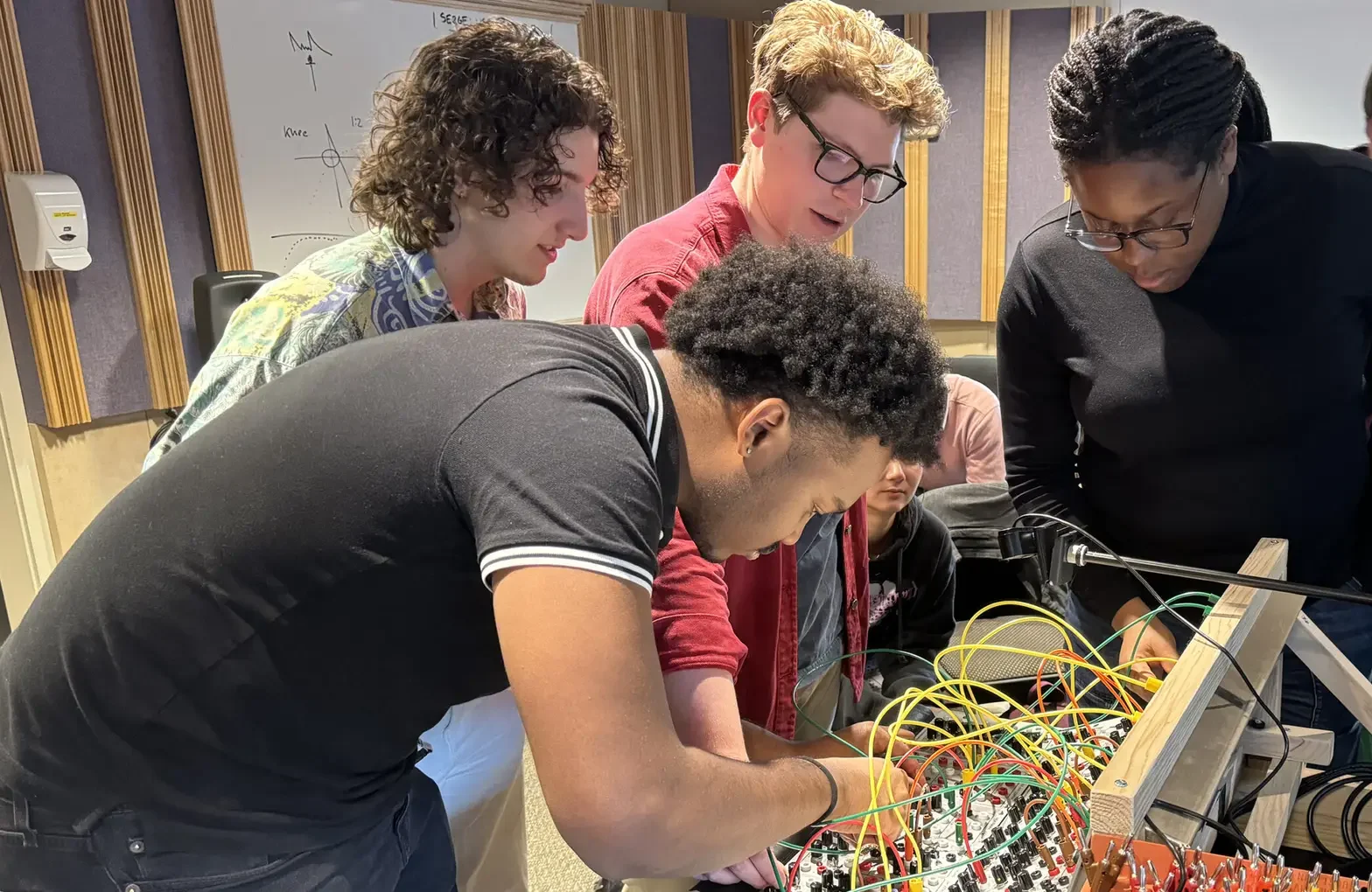

Lecture 01
Building blocks of sound synthesis, Introduction to the VCV Rack environment, creating a user account, downloading libraries
practical work:
Use the first introduction patches to familiarize yourself with the environment. Create a simple patch with VCO, LFO, VCF
Lecture 02
History of synthesis, overview of module types
practical work:
use the remaining introduction patches to understand gates, triggers, etc.
Lecture 03
Complex oscillators: Tidal and Macro Oscillators
Practical work:
create an evolving sound texture with these two oscillators, use LFN and slow LFO to shape micro and macro time
Lecture 04
Complex oscillators: Texture synthesizer, Granular Synthesis
Practical work:
augment the evolving sound texture with these two oscillators, use again LFN and slow LFO to shape micro and macro time
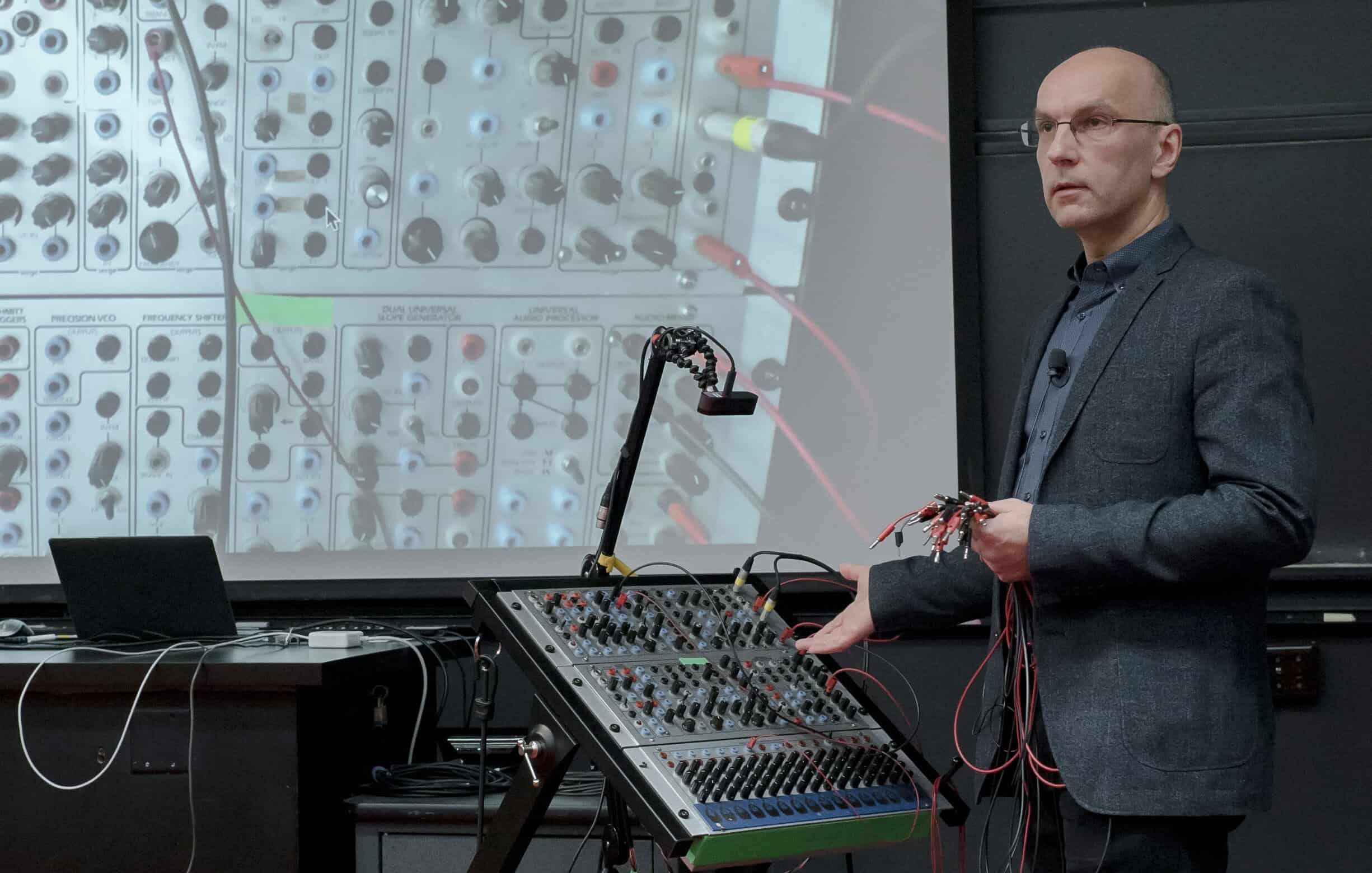
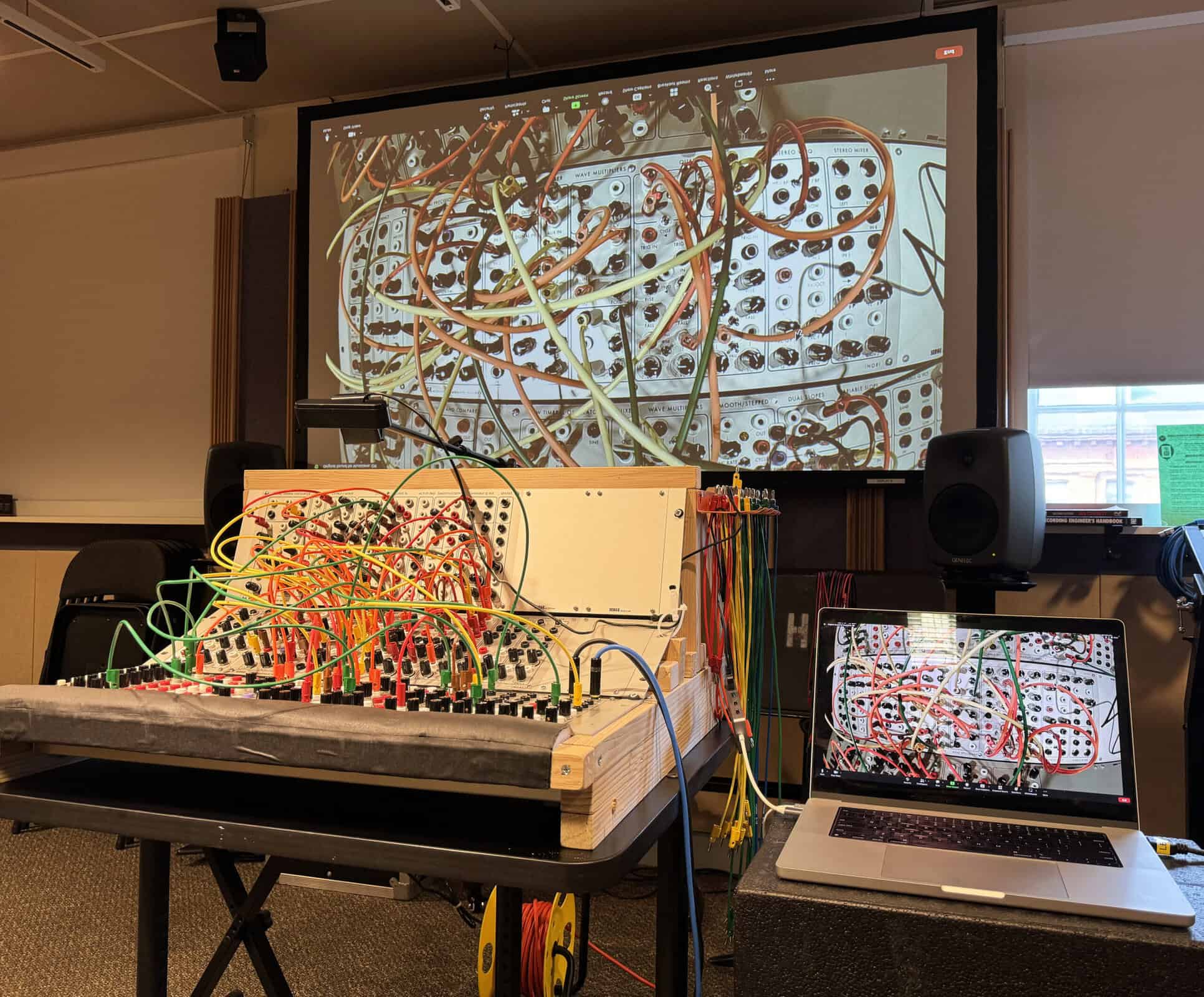
Lecture 05
sequencers and clocks, mixers
Practical work:
use traditional and stochastic sequencers to control your sound textures, combine sounds with mixers
Lecture 06
mixers with sends, reverb and controlled sends to effects
Practical work:
incorporate effects
Lecture 07
organizing sounds into layers, mute unused strips, MIDI control, multiple parameter mapping
Practical work:
Map your layers to an external MIDI controller, reorganize your instrument into a playable patch
Lecture 08
intermodulation, polyphony, delay feedback, audio feedback
Practical work:
augment your instruments to create polyphonic voices
Lecture 09
introduction to my personal improvisation environment
Practical work:
finalize your improvisation environment and sketch a plan for a 3-minute piece, practice a performance
Lecture 10
extending the work environment with sound sends to a DAW, automating parameter control
Practical work:
using the Blackhole sound driver, we will send the sound results into Reaper and understand how to automate sound control inside the DAW to compose, beyond an improvisation
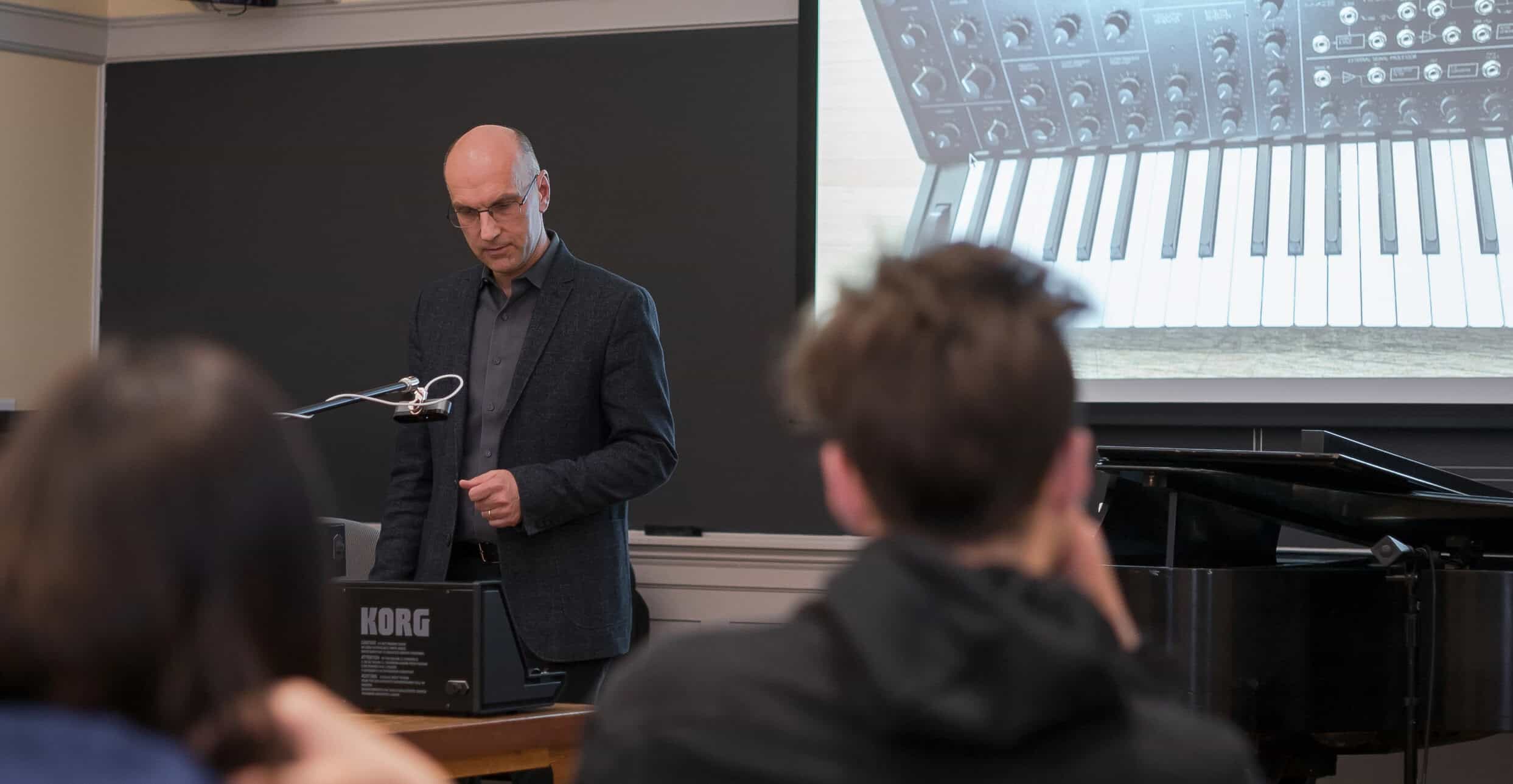
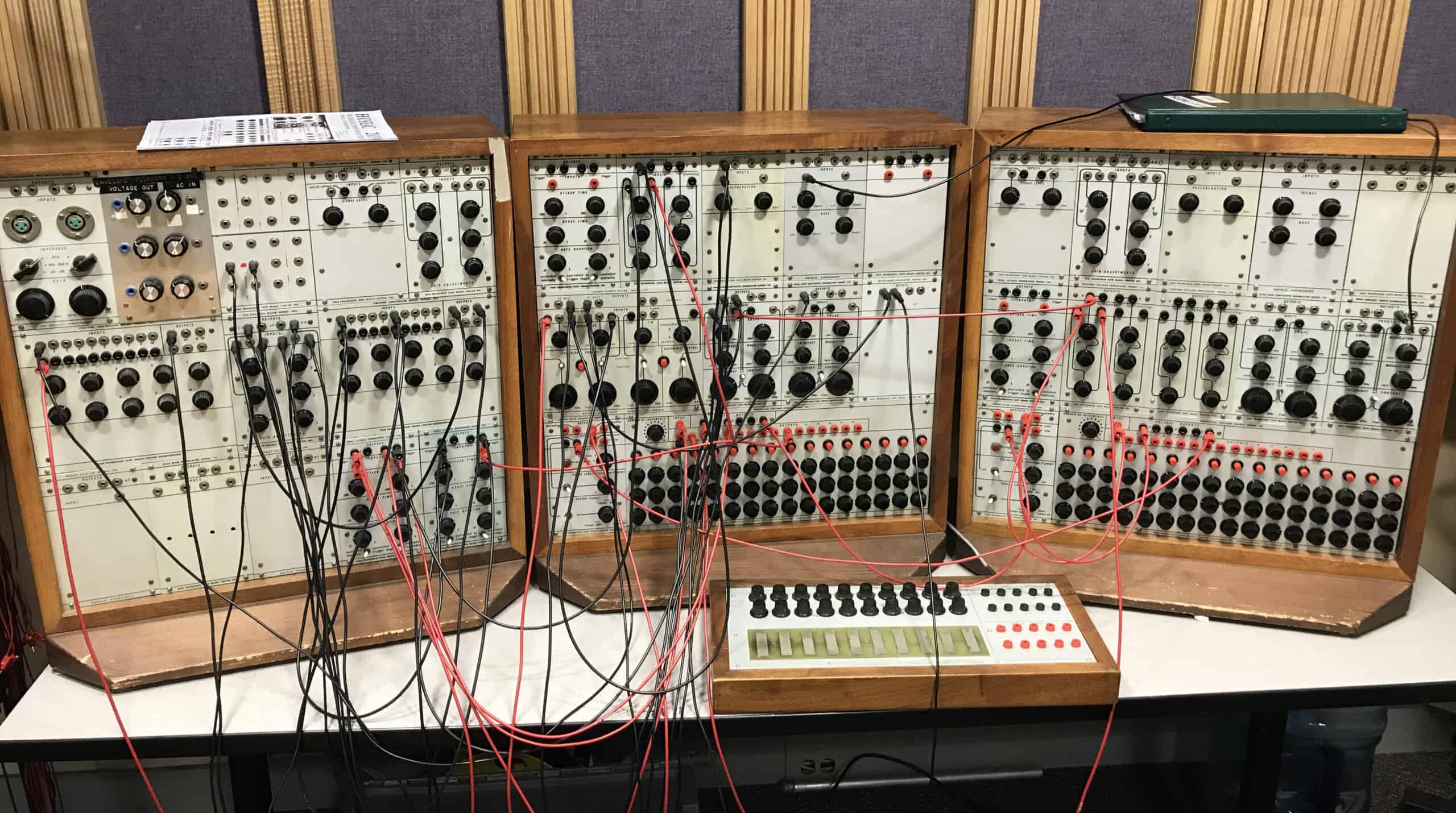
Last Workshop day
Presentations, critique, and final discussion
wired up for two analogue Serge Synthesizers, 2024
Basic patch on Synthi A, EMS